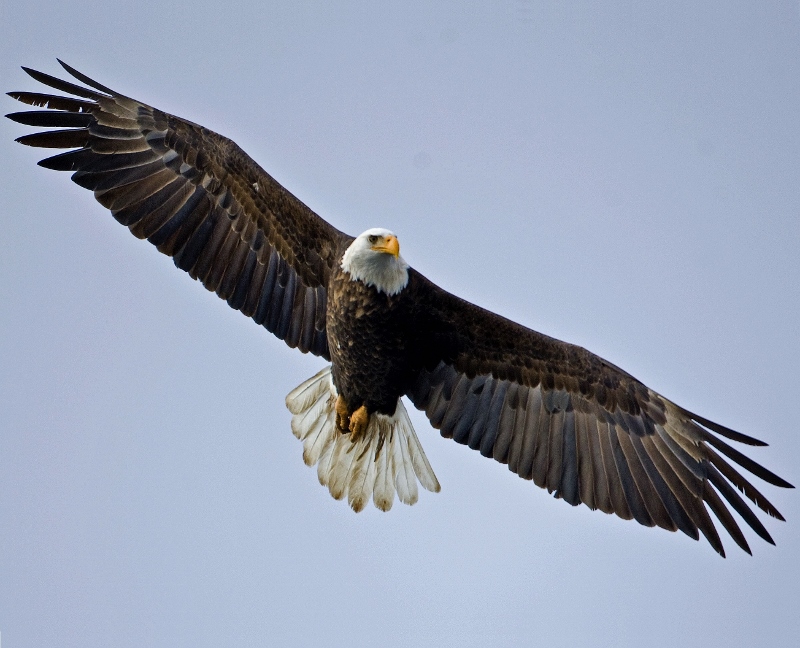 |
| Photo by Tom Michalski (Teaching Issues and Experiments in Ecology) |
Common name:
bald eagle (en); águia-de-cabeça-branca (pt); pygargue à tête blanche (fr); pigargo americano (es); weißkopfseeadler (de)
Taxonomy:
Order Falconiformes
Family Accipitridae
Range:
This North American species is found breeding across most of Canada, patchily in the western United States, in the north-eastern United States and along the Atlantic coast down to Florida. The winter throughout most of the United States and in northern Mexico.
Size:
These large eagles are 70-102 cm long and have a wingspan of 180-230 cm. They weigh 3-6,3 kg.
Habitat:
The bald eagle breeds in forested areas near large bodies of water, including boreal forests, temperate forests and mangroves. They forage in freshwater lakes, rivers, both sandy and rocky shorelines and estuaries, and to a lesser extent on forests, grasslands and scrublands. They are present from sea level up to an altitude of 2.000 m.
Diet:
They mainly feed on fish, such as salmon, herring, shad, catfish, carp, sand lance and bass. To a lesser extent they also eat birds, reptiles, amphibians, invertebrates such as crabs, and mammals including rabbits and muskrats, and also carrion.
Breeding:
Bald eagles breed in February-July. They are monogamous and mate for life. The nest is built by both sexes and consists of a very large structure made of sticks, grass, moss and cornstalks, lined with lichen, fine woody material, downy feathers and green leaves. It is placed in at the top of a tall tree, usually above the forest canopy, or sometimes also on a cliff or even on the ground. There the female lays 1-3 white eggs, which are incubated by both parents for 34-36 days. The chicks are fed by both parents and fledge 56-98 days after hatching. Sometimes the oldest chick attacks and kills its younger siblings early in the nesting period. They reach sexual maturity at 4-5 years of age.
Conservation:
IUCN status – LC (Least Concern)
This species has a very large breeding range and the global population is estimated at 70.000-300.000 individuals. After serious declines until the 1960s, caused by persecution and the effects of pesticides such as DDT, the bald eagle as undergone an incredible recovery, with its population increasing over 70% per decade over the last 4 decades.







